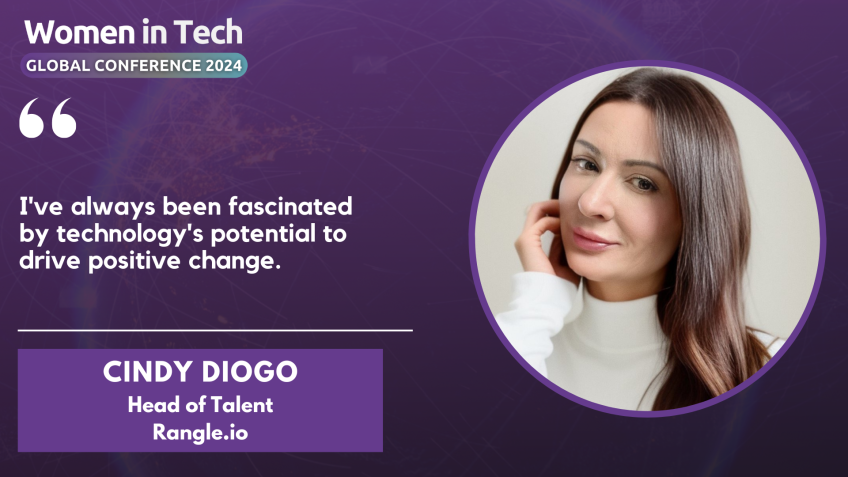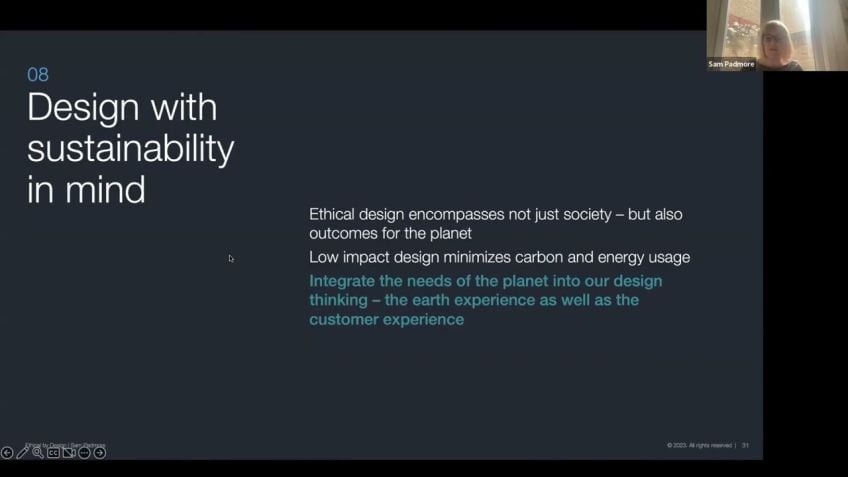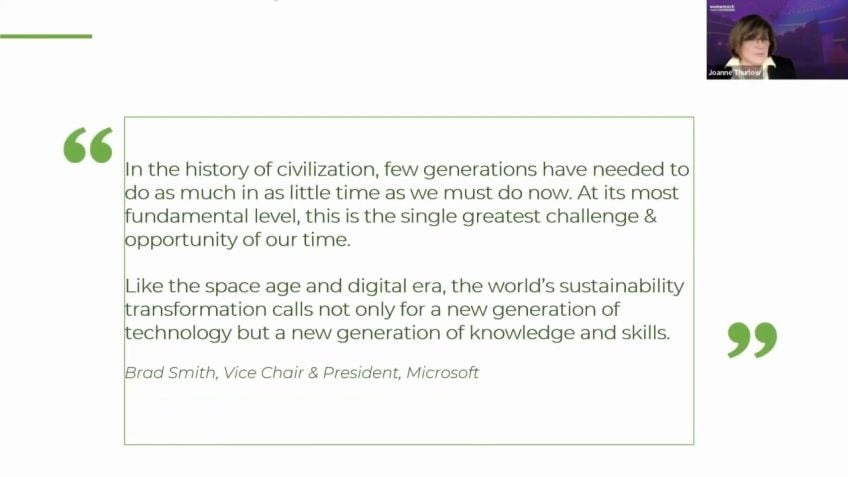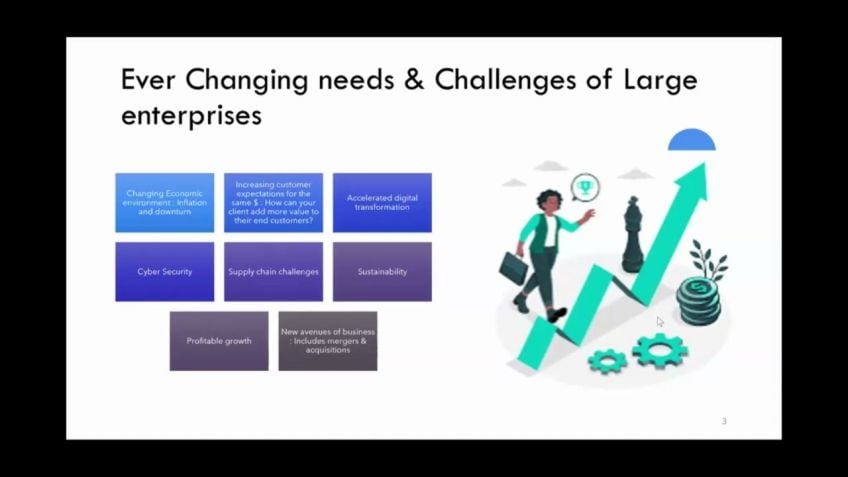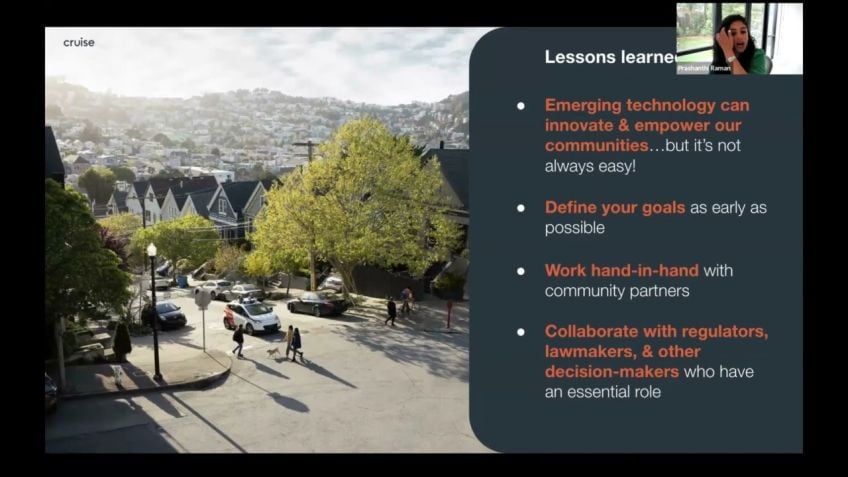Sustain in a Smart Way
Krithika Kumaragurubaran
Senior DevOps Engineer at INGSustainability in Action: Paving the way for the Future with Smart Alternatives and Innovative Tech Solutions
Hello, I'm Kritika Kumara Kurran, a passionate Senior DevOps Engineer at ING Netherlands.
Sustainability is a collective responsibility for all, regardless of our job titles. It's a practice that should be embraced to foster a better future for generations to come. As a senior IT professional, I see sustainability as more than just a trend – it's a driver for change in how we perceive our environments inside and outside our organizations.
No doubt, technology plays a vital part in redefining sustainability and driving it forward. Let's delve into how we make our organizations more sustainable and the roles we can play to drive this change.
Pillars of a Sustainable Business
A sustainable business model caters to the needs of the current generation without putting future generations' needs at risk. It incorporates social, economic, and environmental considerations in the design and implementation of business practices. With the triple bottom line criteria - people, planet, and profit, sustainable business practices can also create economic value without compromising profitability.
As a leading international organization, ING incorporates sustainability at the heart of its strategies, always considering resilience and environmental impact when making decisions.
Technology as a Driving Force
In today's digital age, technology serves as a significant enabler, helping businesses become smarter and more sustainable. By leveraging technology in our business models, we can bridge the gap, making sustainability more profitable and efficient. Plus, it offers long-term value for both business growth and the planet’s preservation.
Reducing Unsustainable Materials: Plastics and Papers
Plastic and paper constitute a significant portion of global waste. Plastic production requires an enormous amount of energy, causing carbon emissions. On the other hand, paper production contributes to deforestation and requires substantial energy and water resources. These are primary culprits to environmental degradation and should be curtailed.
But, how can we reduce these unsustainable materials in our organizations and replace them with smart, more sustainable technologies?
ING's Successful Initiatives in Replacing Plastics with Smart Alternatives
- Microsoft Authenticator - To replace the standard plastic identity cards used for VPN access, we transitioned to using Microsoft Authenticator.
- NFC Mobile Payments - In a bid to reduce the use of credit and debit plastic cards for payments, we use NFC mobile payment methodology.
- Inside Business Portal - Instead of using plastic cards, we transitioned to a more secure access token method allowing for more secure and versatile access for our banking customers.
Proposed Smart Alternatives for Replacing Paper
For organizational processes that traditionally required paper, I propose leveraging E-signing technology for documents and contracts, which minimize paper use considerably.
Summary: The 4 R's of Organizational Sustainability
In summary, organizations can efficiently drive sustainability by incorporating the following four actions:
- Reduce the use of unsustainable materials wherever possible.
- Reuse objects and materials to reduce waste production.
- Recycle materials to create a circular economy.
- Replace unsustainable materials with sustainable technologies and smart alternatives.
These actions will contribute significantly to creating a sustainable society. Remember, just like a plant needs sunlight and water to grow, sustainability needs innovative technology to thrive in today’s world.
Thank you to the Women in Tech Network for offering this platform to share my thoughts about organizational sustainability and the imperative role of evolving technologies in this journey.
Let's all stay connected in this journey as every step towards sustainability counts, and every woman in tech is a leader herself. Let’s make a sustainable society together!
Video Transcription
Hi. Hello everyone. Good afternoon. Good evening. Wherever you are located in the world, I'm Ritika Kumara Gurn. And today I'm gonna speak on the topic how to sustain in a smart way as the topic goes. I know you would have guessed what is this about?This presentation is about? Yes, it is about sustainability and it's common topic for everyone, irrespective of the designation in the organization. So it is uh some kind of sharing of my thoughts and uh you know, ideas from my perspective, how can we contribute to a sustainable society before we move on to the topic? I want to give a small introduction about myself. Yes, I'm Kritika Kumara Kurran based in Netherlands, working as a senior devops engineer at Ing Netherlands. And I'm a motivated uh team leader with 12 plus years of uh software. It experience. I'm kind of a studious uh college student. I was a studious college student who got placed uh from the campus recruitment and I started my journey uh in it as a Java developer and was uh moving on uh and stepping up in the career ladder wearing many hats and uh played a lot of uh roles, worked in large organizations and in various region, I got an opportunity to collaborate with people from diversified uh you know, uh background.
And uh yeah, I thoroughly enjoyed, enjoyed and enjoying my journey as well. And uh yeah, from my personal perspective, it, I'm uh married and uh I have a three year old daughter uh from whom I keep learning every day. New stops. Yeah. So that's all about uh myself. Let's move on to the topic. I would like to provide an overview of the following topics in my presentation today. So this is uh this session will uh we will discuss about the importance of sustainability incorporates and how we can replace the use of unsustainable materials which we use within our organization by smart alternatives using latest technology to pave way for sustainability, moving on.
So there is a famous saying that we do not inherit the earth from our ancestors. We borrow it from our Children. Every person on earth is accountable for sustainability. We must develop the will to be sustainable by start acting upon day to day things that we utilize and also to think how to make it more climate friendly as a women in tech. I feel we have we have more responsibility to save our planet. Yes. From, you know, the global warming is killing the planet from uh the devastating effects of global warming to the rising sea levels. We have, you know, the earth is uh just I it needs to be saved by adopting sustainable practices. So we need to save our planet by adopting sustainable uh practices and it is heightened to act on moving on sustainability business model. So it is referred to how we practice or develop or implement of our business model by thinking that it thinking of a strategy that meets the, that meets the needs of uh the present generation without compromising the needs of future generation. So this includes integrating social economic and environmental considerations on our design and implementation of business model business model. You know, it is based, it manages three triple bottom, triple bottom lines, people, planet and profit.
So it is sustainability in business model is all about managing these three triple triple, you know, three bottom lines and sustainable business practices can also create economic value without compromising the in the profit. Yeah, moving on s in ing we always take sustainability at heart.
It doesn't making the different strategy and it is one of our key topics in CEO message also how to bridge this business model and sustainability. Yes, technology can act as a bridge between business model and sustainability. Sounds interesting. Yes. So technology can enable business to be more successive by providing a few data driven insights and automating sustainable practices and making them more efficient as well as ethical. By leveraging this technology in business model, companies can bridge the gap between sustainability and profitability as I said before and create a long term value for the business as well as the planet. Now, how to do this when you take the global based composition? So this it depends up, it can vary depending upon the geography, the demographics and economic conditions in various regions. So this is an overall picture of waste composition which consists of uh you know, around the world from the a it's a general overview of waste composition around the world. If you see here, apart from organics, it makes the plastic and paper as a more larger proportions of waste composition, which makes its way to the landfill which are unsustainable because of its higher consumption levels. We can see this large proportion as well.
So now how, what is the effects of plastic on the environment? So plastic production requires enormous amount of energy and resources which can re which causes the carbon emissions and contributes to the global warming. Only 9% of the plastic is recycled. According to a survey between 2029 2019 and 2020 there was overall 5.7% decrease in the recycling plastic in the United States. And every year there is 8 million plus of tons of plastic are dumped into the oceans, killing marine life and threatening the endangered species. It is more unsustainable to the planet. How can we reduce this plastics in organization and replace it with technology? Let's think smart and ings initiative to reduce plastic cards is already implemented. First one is Microsoft authenticator replaces the identity cards which they, which have been used uh in the past for the VPN access and inside business portal is accessible via token for our old banking, external and internal customers. And NFC mobile payments replaces the debit cards and credit cards for payment. And what's next in the identity and access management. Many organization use the plastic identity card but the employees use the plastic identity card to gain access to the office buildings for basically, you know, authentication and authorization. We use this uh plastic identity card.
And if you think the size of the organization, the numbers will be high on the depending upon the number of employees of the authentic you know, for the organization. So it the number of batches also increases. When we think about the visitor batches, how can we replace this plastic identity card which we use for access with smart technology? So I propose if we can use, you know, uh if you can replace this plastic identity card with the smart technologies like fingerprint, authentication, face recognition or mobile uh access. So it is going to reduce a large number of plastic identity cards. If you see in one organization, it will be thousands of plastic identity cards. And if you if you think about the world, it is going, the number is going to be huge and definitely it will make an impact on the planet and reduce the plastic consumption as well. Second one that if you remember uh in my previous slide, the second uh I mean, or among two people was the second uh unsustainable material that was uh contributing to the waste composition. So what are the effects of paper on environment? It causes deforestation because 93% of the raw material for the production of paper comes from trees and deforestation in turn can cause increase in carbon dioxide level. Enormous amount of energy and water are required to produce tons of people.
And according to a survey, about 300 to 400 tons of water is required to produce one ton of people around the world. We produce 400 million tons of people every year. And for one car, one for one tree to remove its carbon footprint, it takes more than 400 years. Paper is also an unsustainable material. How can we use smart alternatives for replacing paper, paper usage within our organization? So we use documents and contracts to sign when with our employees or uh with the engineers which we engineers or employees which we hi whom we hire so we can replace this document or contract signing with the e signing method there. We leverage the technology in our business model to reduce the usage of unsustainable material. Like people with this with the smart technology, key actions from my presentation, reduce, replace, recycle and sorry, reduce reuse, recycle and replace the unsustainable materials.
Let's think about many smart alternatives to reduce the unsustainable materials which we are using day to day and contribute our efforts to the organization to reduce them and even which eventually your pay way for a sustainable future and sustainable solution society just as a plant needs sunlight and water to grow, sustainability, needs technology to thrive in today's world.
Yeah, I kept it short in the crisp. So that is it. Thank you all for your time. Thank you so much women in tech network for this amazing opportunity to speak and share my thoughts. I wish everyone a very all the best in their career and every woman is special and uh women in tech is it is a leader itself. So lets stay connected in this.


